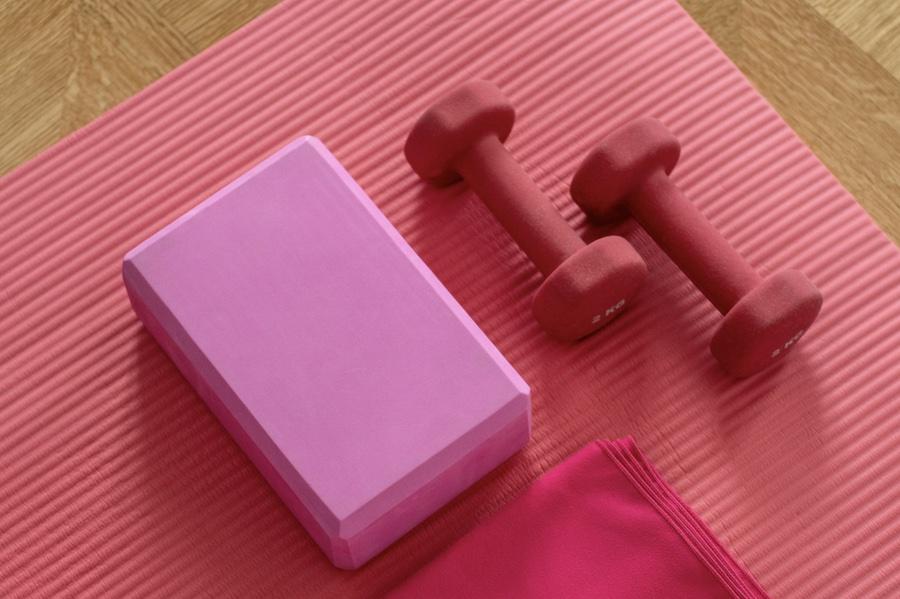Whether a product is safe in terms of its long terms effects is becoming more of a decision influencer when we’re considering products. The same is true for foam products, which begs questions like is EVA foam biodegradable?
I’m going to answer that here for you and provide some outline on why and which EVA foams can biodegrade.
Eva-foam is not biodegradable i.e, it cannot be broken down naturally. EVA the compound that forms EVA foam is a petrochemical polymer that has strong atomic bonds and cannot be easily broken. Biodegradable EVA is now being manufactured and is more eco-friendly.
You can read more about EVA in general here. But let’s focus here on it’s biodegradability.
Eva foam is not biodegradable
Understanding why EVA foam is not biodegradable requires a bit of background.
Eva foam is made or “foamed” using EVA. So the properties Eva foam inherit comes from its raw form which is the EVA material.
Eva is an elastic polymer that produces materials that are “rubber-like”. So the reason why “EVA Foam” is not biodegradable comes from its original context of being a polymer.
By nature, most types of polymers, including “EVA” or “EVA foam”, are not biodegradable because of a strong atomic bond, which will get into a little bit later.
Biodegradable in simple terms means that when a compound is given the right conditions, the presence of microorganisms, fungi, or bacteria will start breaking it down naturally.
This breakdown will return the compound to its basic components which will eventually blend back into the earth.
Ideally, (although not always) this biodegradation doesn’t leave behind any toxins. As EVA foam is not biodegradable it means that it cannot be broken down by these natural processes
This also means that EVA foam can exist for many years in its current form in landfill sites and can also cause a litter problem when disposed of carelessly.

Why EVA foam is not biodegradable?
The reason why EVA foam and most other types of foam are not biodegradable is that they are petrochemicals. Petrochemicals are molecules that are derived from chemical reactions based on petroleum products.
Polymers have long chains of atoms …or more specifically carbon atoms for petrochemical polymers like EVA foam. These atoms are connected by a strong bond that can share electrons in their outer shell.
This bond is very complex and hard to break, although there are rare cases where they can be broken using other chemical reactions. But practically they cannot be broken down easily because of the strong bond they share.
Some kinds of polymers can be broken down photochemically, this is mostly by exposing them to sunlight.
But this form of biodegradation leaves behind toxins. Plus, such photochemical breakdown is not possible with polymers such as EVA or EVA foam.
In simple science
Without getting too deep into the science, the takeaway is that EVA foam – as a petrochemical polymer – is composed of extremely large molecules.
These large molecules cannot be processed by a natural mechanism such as bacteria or other living organisms to break them down, i.e. biodegrade.
So they stay the same way for many years, potentially hundreds, or even thousands of years, and are therefore not considered biodegradable.
It’s important to remember that not all polymers like EVA foam are non-biodegradable. Some polymers are biodegradable.
In such biodegradable polymers, some parts of the large molecules can be broken down relatively easily. This can thereby ease up the biodegradation process.
The problem with EVA foam is that its large molecules are very stable and firm and cannot break easily and so are non-biodegradable.
EVA foam, in its raw form, based on all its applications, is not biodegradable. Common Eva foam products like shoe soles, helmets, boxing gloves and sports padding, when disposed of, will all result in long-term landfill or incineration unless they are recycled.

Biodegradable EVA foam alternatives
This is a recent invention created to help make EVA foam biodegradable.
So this is not the raw form of EVA foam, but EVA foam produced using two different approaches, these are outlined below.
EVA-based foamable composition
This biodegradable EVA-based foamable composition consists of the following:
- An EVA resin
- Foaming agent
- Cross-linking agent
- Lubricant
- Filler
- Plant material selected from a group consisting of starchy materials, powdered grain husks, and wood shavings.
Using a biodegradable EVA-foaming process
This process consists of the following steps:
- Blend an EVA resin, a cross-linking agent, a foaming agent, and a plant material selected from a group consisting of starchy material, wood shavings, and powdered grain husks
- The blending temperature should be194°F to 248°F (90-120°C)
- This will form an intermediate product
- In a mold cavity, this intermediate product is sent through a thermal compression molding at a temperature of 320°F to 347°F (160-175°C) and a pressing pressure of 265lb – 176lb per square inch (120-180kg)
- This molding and pressing produces a biodegradable EVA-foam
Biodegradable foams are in popular use now. They do not sacrifice the properties offered by a raw or authentic EVA-foam.
Biodegradable foams represent the same strength and hardness as non-biodegradable EVA foam. So you can pretty much use these forms of biodegradable EVA foams for any common Eva-foam-based applications like shoe soles.
In truth, many famous shoe manufacturing brands are moving to these biodegradable forms to make their brand more eco-friendly.
Is EVA foam safe?
EVA stands for ethylene-vinyl acetate and is soft and flexible, yet strong plastic. It is considered safe to use, and also food safe. EVA is often used for mouth guards and teethers. EVA is also used as a safe alternative to PVC and is also BPA-free.
Is EVA foam waterproof?
EVA material is manufactured as closed-cell foam. EVA is used for many applications it can be exposed to many environments. It is used to make shoes, children’s bibs, teethers and mouth guards, bath and pool toys, and is considered totally waterproof.

Can EVA foam be washed?
EVA foam is waterproof. Household dish soap works as a good cleaning agent for EVA foam products such as shoes or playmats. Suds help lift dirt from EVA material without damage and is the safest option. It can also be machine washed. Ensure you rinse off well if using stronger detergents.
Is EVA good for soundproofing?
EVA foam provides good sound insulation qualities due to trapped air inside the closed cell structure. This can help in some situations such as gym mats or child play mats. In terms of wall insulation, there are other foams that provide better sound insulation qualities for less money.
See my article on Charcoal foam for a better option on this.
Does EVA foam melt?
EVA melting temperature ranges from 194°F (90°C) up to 248°F (120°C). This varies due to the copolymer ratio. Upon reaching these temperatures, EVA foam will emit toxic fumes so adequate ventilation and standard fire precautions are needed when heating EVA foam.
More foam help…
I hope this has helped answer the question regarding whether EVA foam is biodegradable. Be sure to read about EVA foam here to find out more. And also, check out other types of foam that are available.
And ensure you understand foam density and firmness ratings – as these are relevant and important for almost all types of foam.
